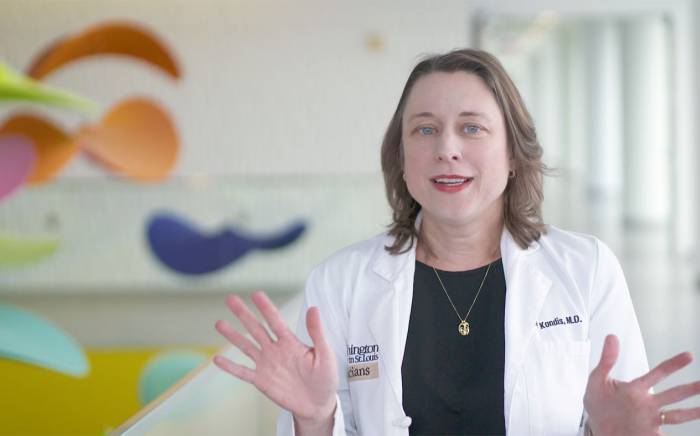Sudden infant death syndrome, better known as SIDS or crib death, describes the unexplained, sudden death of an infant during a period of sleep. SIDS occurs in infants younger than one year of age. It is uncertain what exactly causes SIDS.
Research has identified several factors that increase an infant’s risk for SIDS. Evidence has shown some infants who die from SIDS are born with abnormalities in their brains and have difficulty regulating their breathing. Infants born with immune system problems or metabolic disorders have also been identified to be at a higher risk for SIDS.
Other risk factors for SIDS are preventable. Keeping your infant in a safe sleeping environment can reduce their risk of SIDS.
- Place your infant on his/her back in a safety-approved crib with a firm mattress.
- Do not allow your infant to sleep on a cushioned surface, waterbed or in your bed.
- Avoid overheating by dressing your infant in light sleep clothing in a room where the temperature is comfortable to an adult.
- Remove objects from the crib like quilts, sheepskins, comforters and stuffed toys, that could cover the infant’s face.
- Avoid all exposure to smoke, beginning in pregnancy. Mothers who smoke during their pregnancy are three times as likely to have an infant who dies from SIDS.
- Early and regular visits to your doctor during your pregnancy may help identify or prevent the development of risk factors for SIDS.
- Avoid the use of infant monitoring products, which claim to reduce SIDS. Often the effectiveness and safety have not been properly tested.
Pacifiers may help reduce the occurrence of SIDS, but don’t force the use of pacifiers if the infant is uninterested. Pacifiers should be clean, replaced often and introduced after one month of age in breastfed infants.
When your infant is awake and closely supervised they should be placed on their stomach. “Tummy time” is important in developing strength in the muscles of the neck, back and shoulders and helps prevent flat spots on the back of the head.
Make sure you share all the information about safe sleeping with everyone who cares for your infant, so your infant is placed in the safest sleeping position.
Information Source:
This article was written by Laura Gryglewski, RN, a pediatric nurse at the St. Louis Children's Hospital Answer Line.












